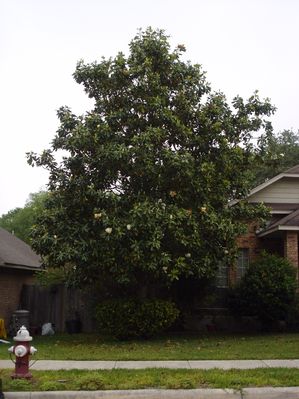
Mortellaro's Nursery
Print This Page




Magnolia, Southern
Magnolia grandiflora
Discontinued
The Magnolia is the quintessential blooming tree of the southern landscape. It naturally becomes the focal point in a landscape with its well-defined pyramidal shape, large green leaves, and fragrant blooms throughout the summer.
Native to east Texas, the Magnolia tree appreciates well-drained, deep, organic soils. Regular watering and fertilization will help maintain the lush green foliage and regular blooming. Although an established Magnolia is drought tolerant, it will lose the gorgeous demeanor. Typically single-trunked and half as wide as tall, it demands a large area in the landscape; grass and sun loving plants will not grow under it.
Fragrant large flowers can be up to a foot across with a dozen creamy white petals, forming a natural cup shape. Distinctive cones are left behind when the petals drop, drying up to release bright red seeds that hang on by a silky thread. They stand above the large green leaves that grow up to eight inches long, stiff with a waxy-green topside and rusty-brown color underneath. Numerous cultivars have been introduced, but are not too widespread in the nursery industry.
 |
Specimen Tree |
 |
Shade Tree |
Flower Color:White |
Height:60-90 Feet |
Spread:30-50 Feet |
Homeowner Growing & Maintenance Tips for Magnolia grandiflora
Requires deep, moist soil.
Appreciates acidic soils.
USDA Hardiness Zone 6a
Characteristics & Attributes
|
Deer Tolerance
|
Exposure
|
Habit
|
Water Needs
|
||||||||
